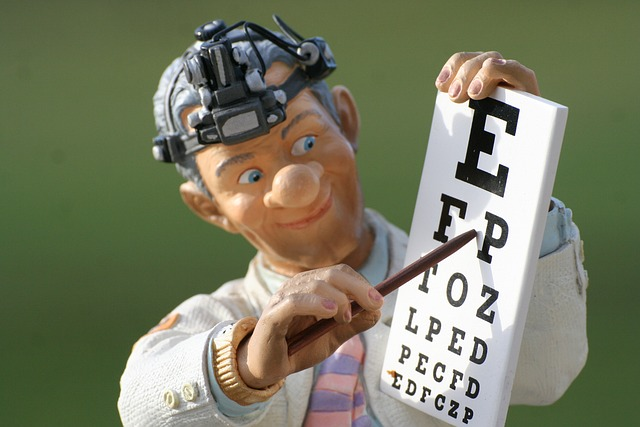The Impact of Diet on Eye Health – What Should We Eat to Support Vision?

Food and nutrition are very important for general body health. But a healthy diet is not limited to your body’s immune system, weight, or skin alone. Eating healthy also does a great deal for your eye health, and if you don’t eat the right foods that promote vision, you may be lacking. Sometimes, a lack of these food sources could make the eye not produce enough tears. Other extreme results could be a higher susceptibility to eye diseases or a significant impact on vision health (especially for those who are older). In this article, you’ll learn the food sources that directly benefit eye health, as well as those foods which can lead to vision problems.
Can Certain Diets Increase the Risk of Vision Problems?
Definitely, there are some foods that increase your risk of developing an eye syndrome or in general, decrease your vision health. But the thing is that these food sources are so common that you could already be ingesting most of them and not know about it. While it’s important to stay away from these foods, it’s not recommended, however, to stop it completely. You need to reduce how much of these foods you consume. That said, here are the foods that lower the health of your vision.
There is no specific food that directly lowers eye health, but certain dietary habits and nutritional deficiencies can contribute to eye problems. Maintaining a balanced and nutritious diet is crucial for overall eye health. Some factors that may negatively impact vision include:
1. Highly Processed Foods: The number one type of food you should stay away from is refined sugars and unhealthy fats. Not only do these foods increase the risk of developing diabetes, but it also affect the health of the retina.
2. Trans Fat: Similar to highly processed foods, trans fat is also bad for your eye health, if not worse. Presents in foods like cake, margarine, french fries, bread, and buns, trans fat can cause adverse effects on the eye, even possibly leading to vision loss from the generation of diabetes and heart problems.
3. Excessive Alcohol: Heavy consumption of alcoholic beverages can also lead to nutritional deficiencies, which eventually affect the eye. Studies have also shown that chronic alcohol consumption speeds up the progression of age-related macular degeneration (AMD). The same goes for excessive consumption of caffeine or soda drinks.
4. Dehydration: Finally, inadequate intake of water can cause dry eyes, which may not necessarily cause vision problems, but it can lead to discomfort, redness, irritability, or itching.
Which Vitamins and Nutrients May Be Beneficial for Eye Health?

Now that you know what foods you should not eat, it’s time to talk about what your plate should contain (in terms of nutrients). Several vitamins and nutrients play crucial roles in maintaining optimal eye health.
1. Vitamin A: Essential for the functioning of the retina, vitamin A is important for low-light and color vision. You can find some vitamin A in foods such as sweet potatoes, carrots, spinach, and liver.
2. Vitamin C (Ascorbic Acid): This vitamin is an antioxidant that helps protect the eyes from oxidative damage. It is present in all citrus fruits, strawberries, bell peppers, and broccoli.
3. Vitamin E (Tocopherol): Another antioxidant, vitamin E helps protect cells in the eyes from damage caused by free radicals. Spinach is a good source of vitamin E. Other food sources include seeds, nuts, and vegetable oils.
4. Zinc: This mineral is important for maintaining the health of the retina and may help slow down the progression of age-related macular degeneration (AMD). Zinc is found in foods like meat, dairy products, nuts, and whole grains.
5. Omega-3 Fatty Acids: Essential for maintaining overall eye health, omega-3 fatty acids, particularly DHA (docosahexaenoic acid), are concentrated in the retina. Fatty fish (salmon, mackerel, and sardines), flaxseeds, and walnuts are good sources.
6. Lutein and Zeaxanthin: These carotenoids are found in high concentrations in the retina and are crucial for protecting the eyes from harmful high-energy light waves like ultraviolet rays. Leafy green vegetables, such as kale and spinach, are rich sources.
7. Vitamin D: While primarily known for its role in bone health, vitamin D may also play a role in preventing conditions like macular degeneration. Fatty fish, fortified dairy products, and exposure to sunlight are sources of vitamin D.
8. B Vitamins (B6, B9, B12): These vitamins play a role in maintaining nerve function and may help reduce the risk of AMD. Foods like meat, fish, poultry, dairy products, and leafy green vegetables are some good source of vitamin
But what are antioxidants?
We’ve been talking about food of eye healthy nutrients, but at every junction, there’s always something about antioxidants. So, let’s look into that.
What are antioxidants?
They are like superheroes for your body since they fight against troublemakers called free radicals that can mess with your cells and make you age faster. They also help to fight against eye diseases, and support eye health, and they play a large role in reducing the risk of developing cataracts. Without antioxidants, age-related macular degeneration might as well be a home name.
However, antioxidants are not nutrients (directly) that you can find in foods. Instead, they are substances found in food nutrients like vitamins C and E, plus minerals like zinc.
What foods are antioxidants?
1. Berries: Blueberries, strawberries, raspberries, and blackberries are packed with antioxidants, including flavonoids and vitamin C.
2. Citrus Fruits: Oranges, lemons, grapefruits, and other citrus fruits are rich in vitamin C, a powerful antioxidant.
3. Leafy Greens: Spinach, kale, collard greens, and Swiss chard contain antioxidants like lutein and zeaxanthin.
4. Nuts and Seeds: Almonds, walnuts, sunflower seeds, and chia seeds provide vitamin E and other antioxidants.
5. Colorful Vegetables: Bell peppers, carrots, sweet potatoes, and tomatoes are loaded with antioxidants like beta-carotene and vitamin C.
6. Broccoli and Brussels Sprouts: These cruciferous vegetables contain various antioxidants, including sulforaphane.
7. Dark Chocolate: Cocoa contains flavonoids, making dark chocolate a tasty source of antioxidants.
8. Green Tea: Rich in catechins, green tea is known for its antioxidant properties.
9. Red Grapes: Resveratrol, an antioxidant found in red grapes, may have various health benefits.
10. Fish: Fatty fish like salmon, mackerel, and trout provide omega-3 fatty acids, contributing to eye health.
7 Important Foods for Healthy Eyes and Vision—Besides Carrots

Carrots have earned their reputation as a go-to food for promoting eye health, and for good reason. Packed with beta-carotene, a precursor to vitamin A, carrots play a crucial role in maintaining the health of the cornea and supporting optimal vision. Vitamin A is essential for the functioning of the retina, which is responsible for converting light into signals the brain interprets as vision. Adequate vitamin A helps prevent night blindness and contributes to overall visual acuity.
Beyond their vitamin A content, carrots also contain antioxidants that protect the eyes from oxidative stress. Regular consumption of carrots has been associated with a reduced risk of age-related macular degeneration and cataracts. While carrots aren’t the sole solution for eye health, they make a delicious and nutritious addition to a diet focused on supporting clear vision as well as maintaining eye health. However, here are seven other foods;
- Spinach: Spinach is a powerhouse of nutrients, including lutein and zeaxanthin, two types of carotenoids that are especially good for your eyes. They help protect against damage from sunlight and reduce the risk of cataracts and age-related macular degeneration (AMD). Spinach is also rich in vitamins C and E, which are antioxidants that help maintain eye health.
- Salmon: Salmon is an excellent source of omega-3 fatty acids, particularly DHA, which is a major structural component of the retina in your eye. Regular consumption of salmon can help prevent dry eyes and maintain the health of the retina, potentially reducing the risk of AMD. Omega-3s also have anti-inflammatory properties, which can help with eye health.
- Eggs: Eggs are a great source of lutein and zeaxanthin, as well as zinc and vitamin D. The yolks contain these important nutrients, which can help reduce the risk of age-related sight loss and improve overall eye function. Eggs are also versatile and can be included in various meals throughout the day.
- Oranges: Oranges and other citrus fruits are high in vitamin C, an antioxidant that is critical to eye health. Vitamin C helps the body form and maintain connective tissue, including collagen found in the cornea of the eye. It can also help reduce the risk of cataracts and AMD.
- Almonds: Almonds are packed with vitamin E, which is known to protect the eyes from free radicals that can break down healthy tissue. Regular consumption of vitamin E can help prevent cataracts and AMD. Almonds are also a healthy snack that can easily be incorporated into your daily diet.
- Sweet Potatoes: Sweet potatoes are a rich source of beta carotene, which the body converts into vitamin A. Vitamin A is essential for good vision, as it helps the eye absorb light and keeps the eyes moist. Lack of vitamin A can lead to a condition known as xerophthalmia, a leading cause of preventable blindness in children.
- Bell Peppers: Bell peppers are one of the richest sources of vitamins A and C, which are both essential for healthy eyesight. They also contain a small amount of zeaxanthin. The combination of these nutrients helps keep the eyes healthy and can protect against cataracts and AMD.
Understanding Age-Related Macular Degeneration: Symptoms and Available Treatments
Age-related macular degeneration (AMD) is a common condition that affects the macula, the part of the eye that is responsible for sharp, central vision. This part of the eye is crucial for activities like reading, driving, and recognizing faces.
Types of AMD
AMD typically affects people over 50 and is a leading cause of vision loss in older adults. But the good thing is that eating healthy diet can help to either avert or delay this degeneration.
- Dry AMD
This is a common eye syndrome which have been shown to progress more slowly than the others. Those with this unique dry eye syndrome would have their macula get thinner with age, and tiny clumps of protein called drusen would start to grow. While there’s currently no cure, certain supplements have been said to help slow progression. This includes formulas like AREDS2 (Age-Related Eye Disease Study 2), which can slow the disease. AREDS2 contains a mix of vitamins C and E, zinc, copper, lutein, and zeaxanthin. It’ll also help if the patients can make a habit of eating lots of green vegetables, healthy fats, and fish.
- Wet AMD
This less common but more severe type occurs when new, abnormal blood vessels grow under the retina. These vessels may leak blood or other fluids, causing scarring and more rapid vision loss. In this case, patients would need medications injected into the eye. There could also be laser therapy or other forms of therapeutic treatment to help stop or slow down eye diseases.
Nonetheless, AMD progresses slowly in most people and faster in others. Early detection is crucial.
Symptoms of AMD
- Blurred Vision: Objects may appear blurred, especially in the center of your visual field.
- Dark, Blurry Areas or Whiteout: You might notice a smudge or blank spot in the center of your vision.
- Distorted Vision: Straight lines such as door frames or telephone poles may appear bent or wavy.
- Color Perception: Colors may seem less bright than before.
- Difficulty in Low Light: Difficulty adapting to low light levels, such as when entering a dimly lit room.
The Importance of Regular Eye Tests for Children

Even though it may seem as though food is the ultimate, for kids, it’s a tad bit more. In fact, kids need more attention to eye care than the average adult, especially those who have a family history of eye diseases. According to the National eye institute, kids should have a proper eye test at least once every two years in order to check for eye health, diseases, syndromes, or any abnormality before it worsens. That said, below are the importance of eye tests for kids:
- Detecting Vision Problems Early: Children may not always express or even be aware of vision issues. Regular eye exams can detect problems such as nearsightedness, farsightedness, astigmatism, or lazy eye (amblyopia) early on. Early detection allows for timely intervention and treatment, which can significantly improve the chances of successful correction.
- Developmental Milestones: Vision is closely linked to the development of motor skills, hand-eye coordination, and spatial awareness in children. Identifying and addressing vision issues early can support proper development in these areas.
- Preventing Amblyopia: Amblyopia, or lazy eye, is a condition where one eye doesn’t develop properly. Early detection and treatment, often through corrective lenses or eye patches, can help prevent permanent vision impairment.
- Eye Strain and Discomfort: Children may not always complain about eye discomfort or strain. Regular eye tests can identify issues such as eye fatigue or headaches, which may be related to uncorrected vision problems.
- Monitoring Eye Health: Eye exams not only check for refractive errors but also assess the overall health of the eyes. Conditions such as allergies, infections, or other diseases may be detected during routine eye tests.
- Screen Time Impact: With the increasing use of digital devices, children are exposed to screens more than ever. Prolonged screen time can contribute to digital eye strain. Regular eye exams can help manage the impact of screen use on vision.
- Building Lifelong Habits: Regular eye exams encourage the habit of proactive healthcare. Instilling this habit from a young age can lead to a lifelong commitment to eye health and overall well-being.
FAQ
What food helps with eye vision?
Foods rich in nutrients like beta-carotene (found in carrots, and sweet potatoes), vitamin A (in spinach, and kale), omega-3 fatty acids (in fish), and antioxidants (in berries) support eye health. These nutrients contribute to maintaining good vision and preventing age-related macular degeneration and other eye conditions.
How can I correct my vision with diet?
While diet alone cannot replace the need for prescription eyewear, a nutrient-rich diet may support eye health. Consume foods high in vitamins A, C, and E, as well as zinc and omega-3 fatty acids. Green leafy vegetables, fish, nuts, and colorful fruits can contribute to maintaining healthy vision.
Which fruit is best for eye vision?
Blueberries are considered one of the best fruits for eye vision. They are rich in antioxidants, particularly anthocyanins, which may help improve night vision and protect against age-related macular degeneration. Additionally, they contain vitamins C and E, further supporting overall eye health.






